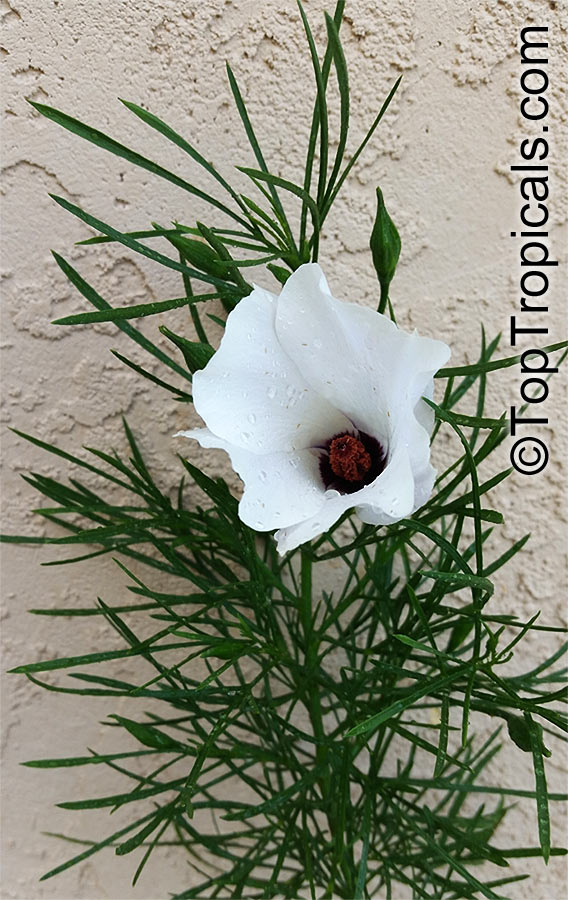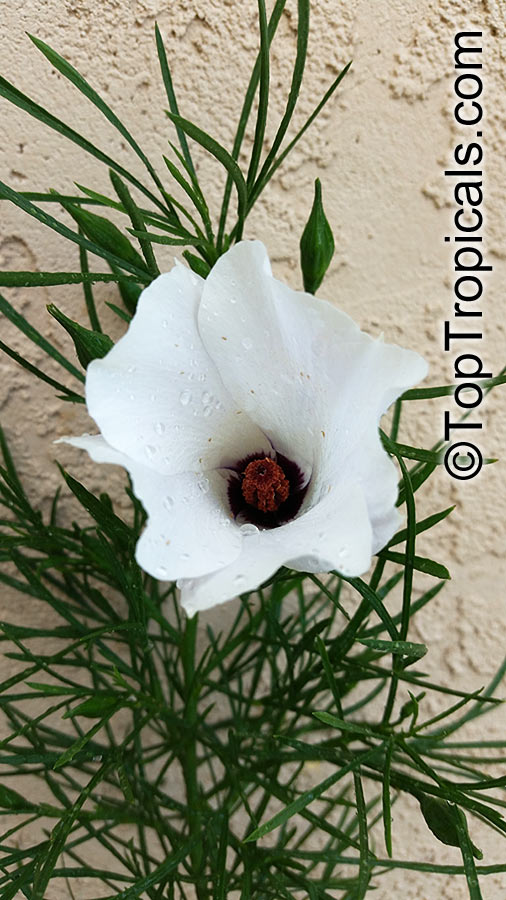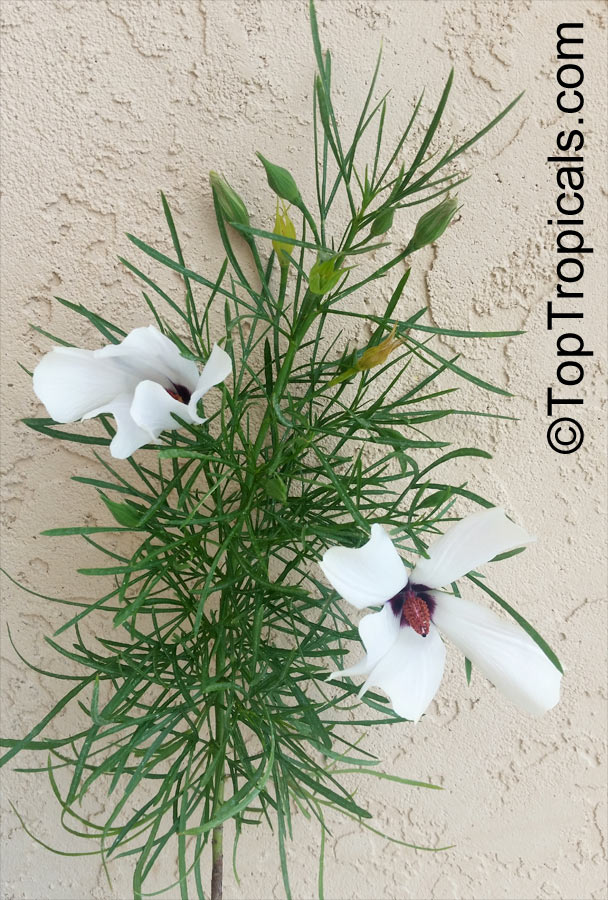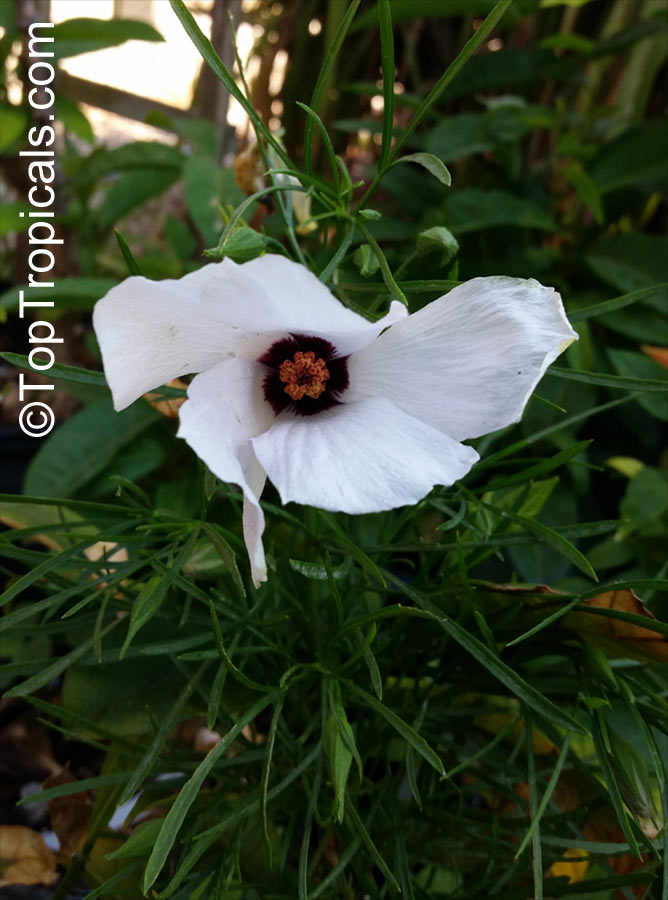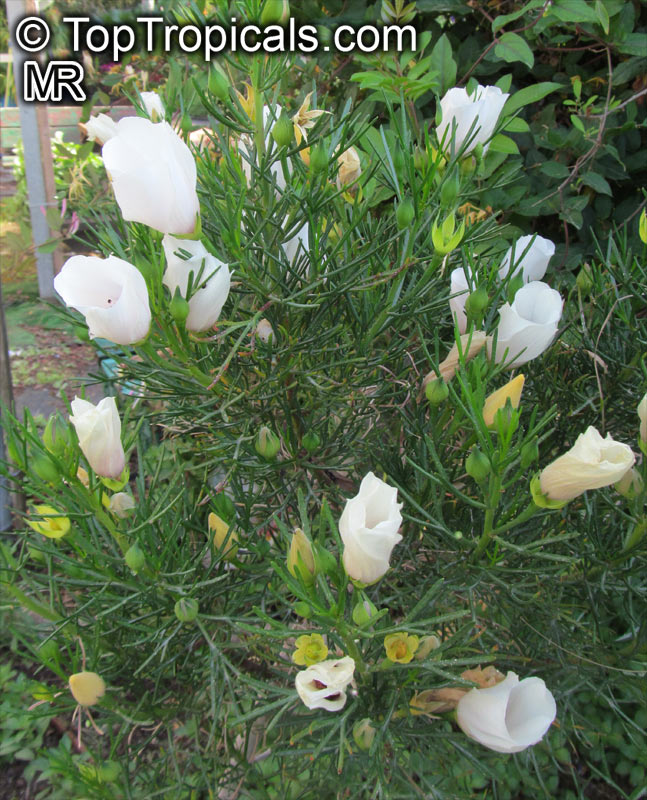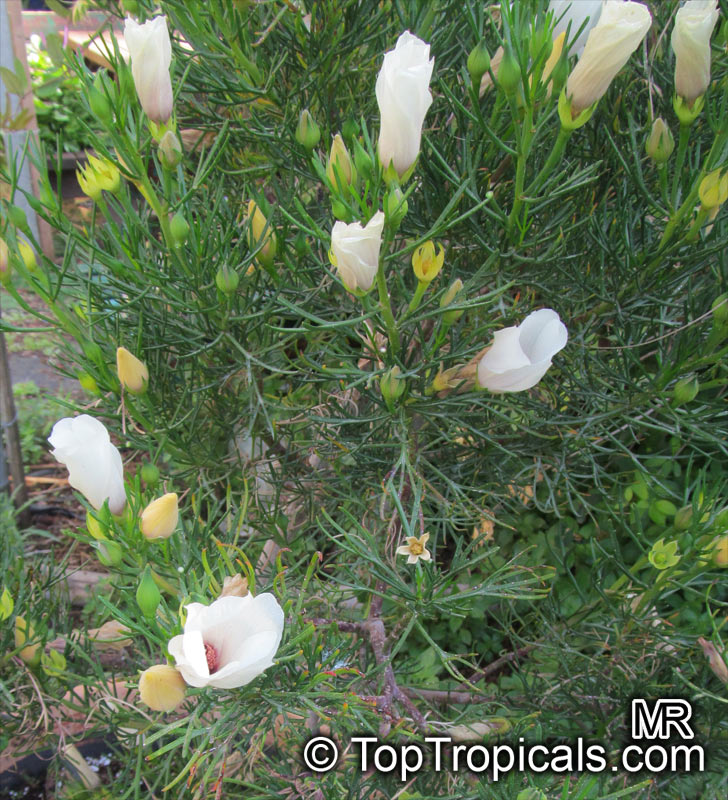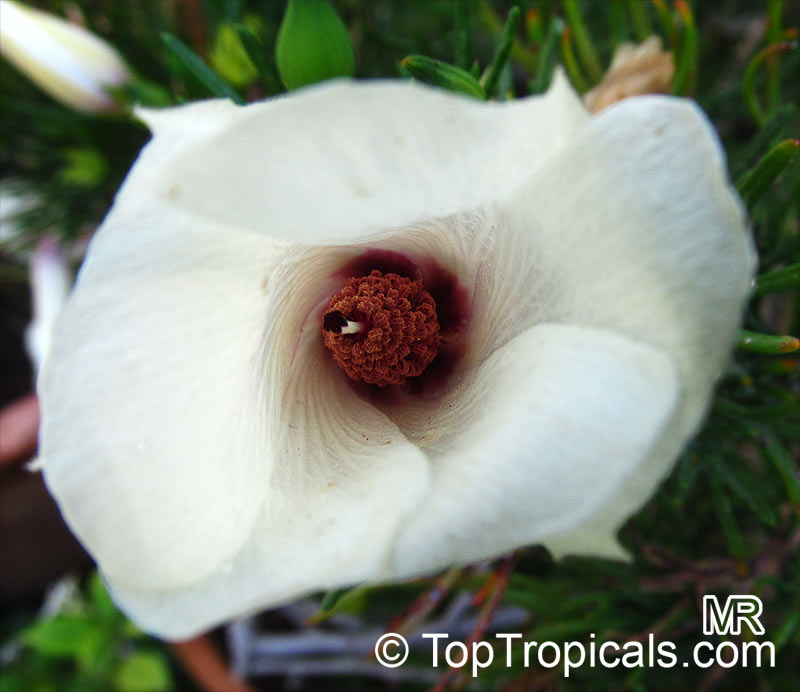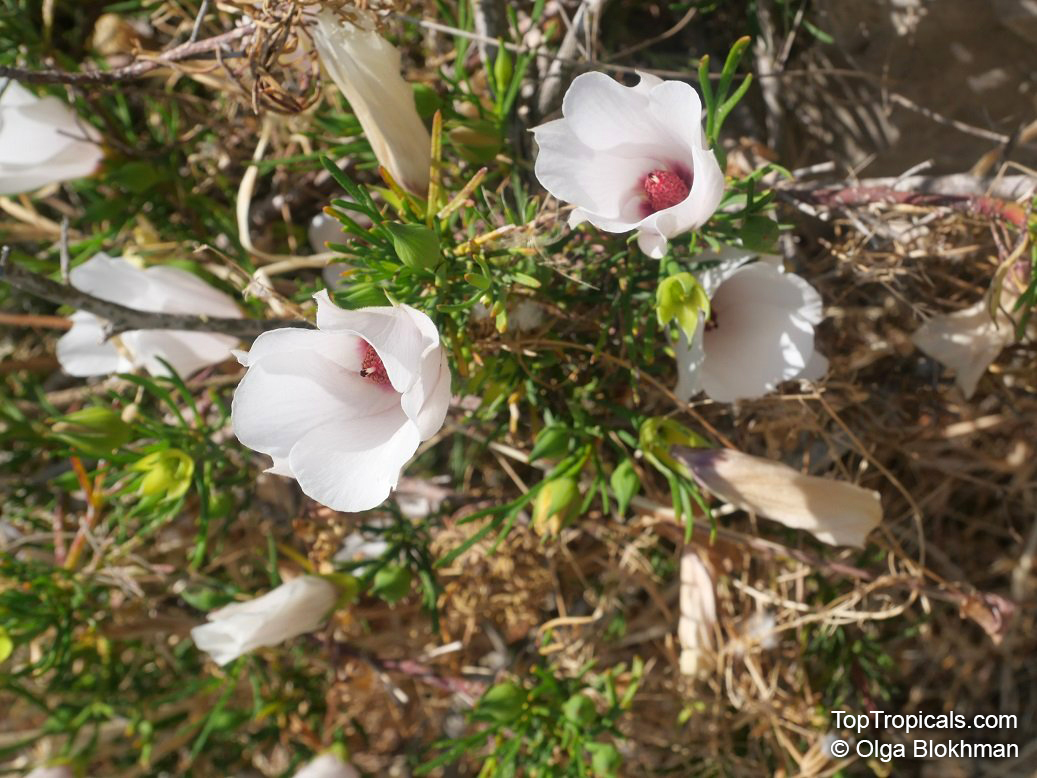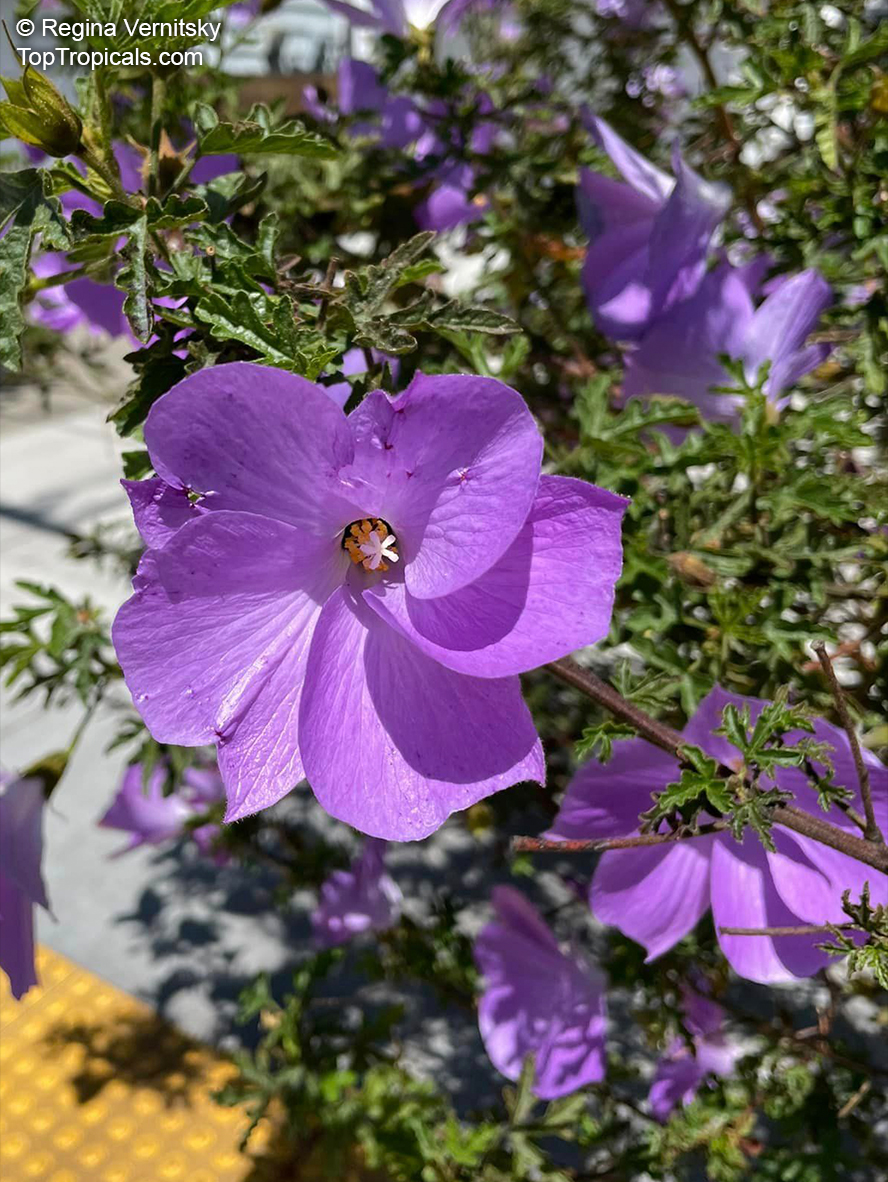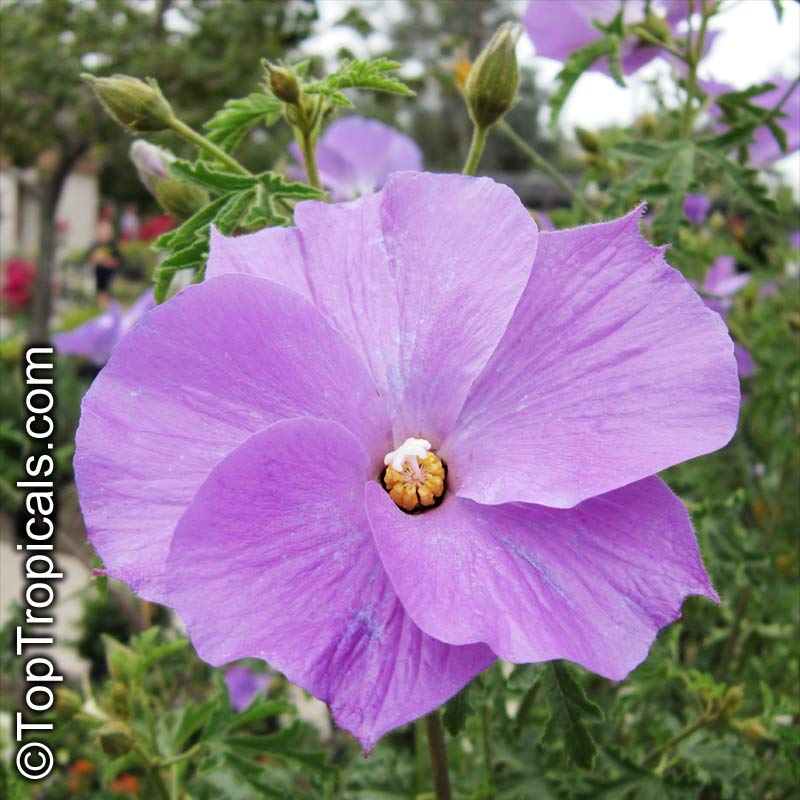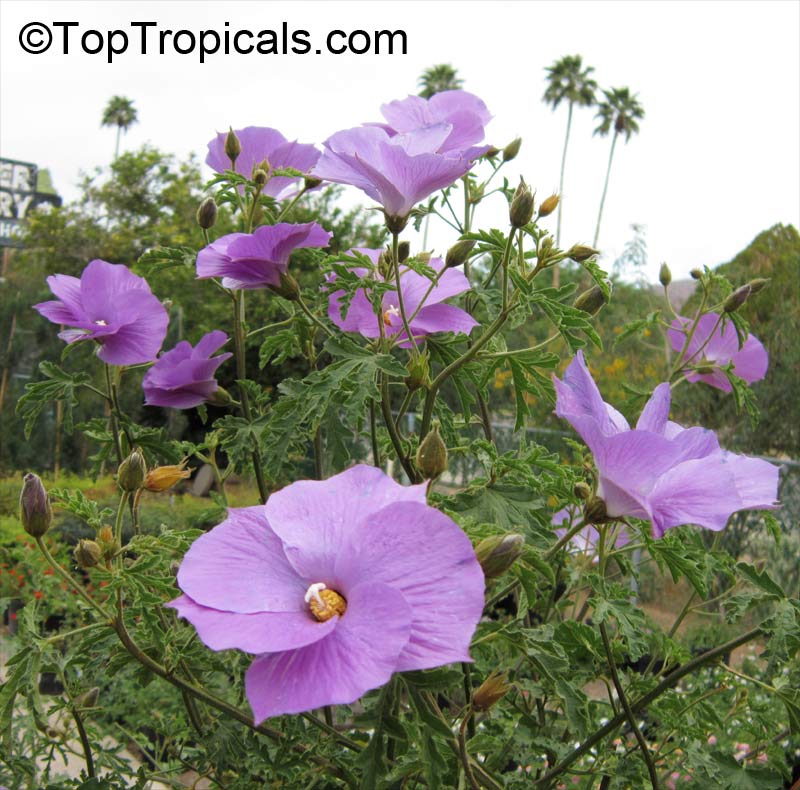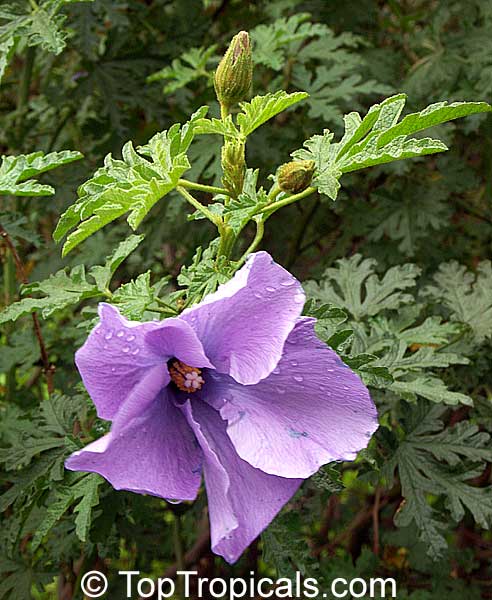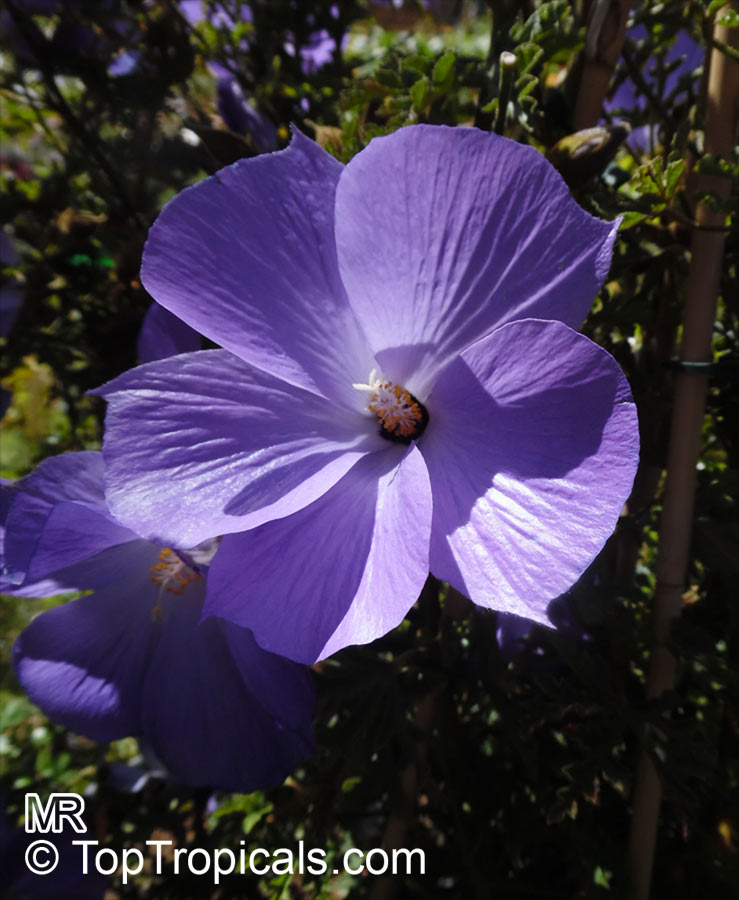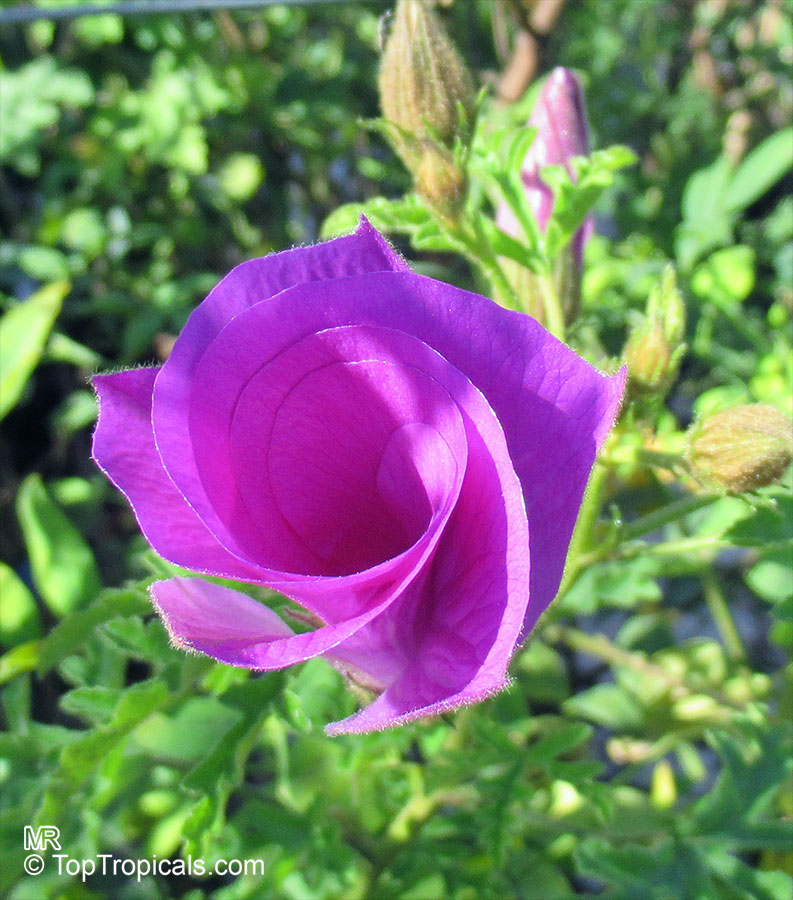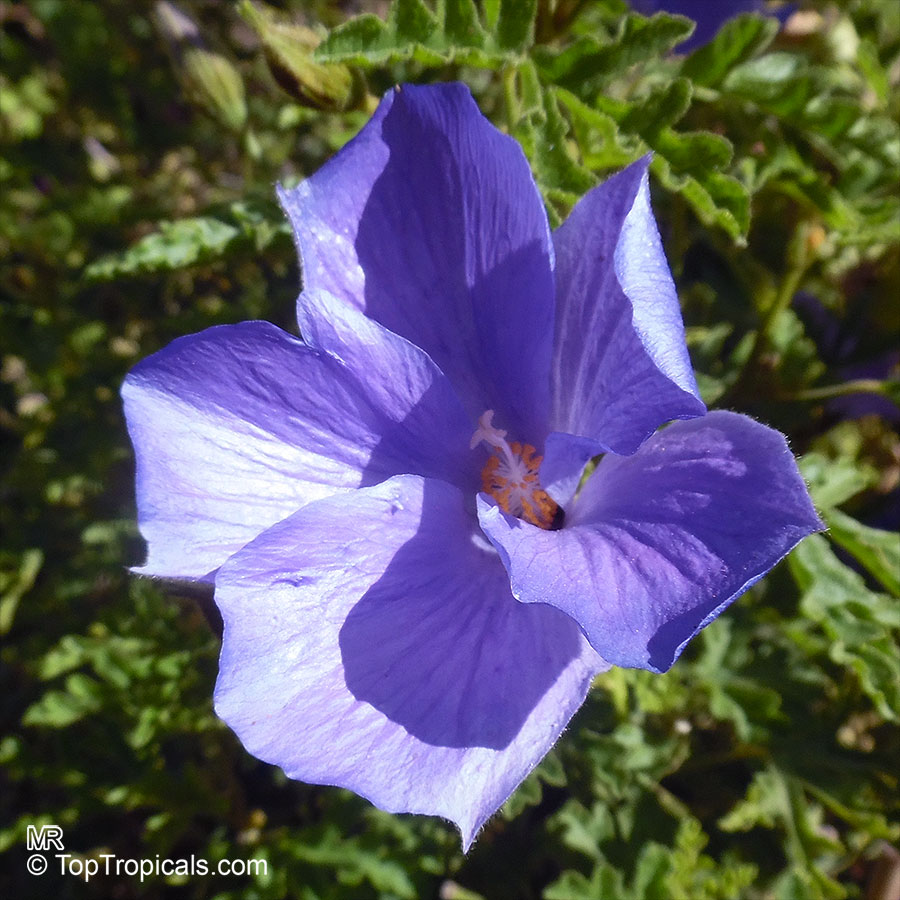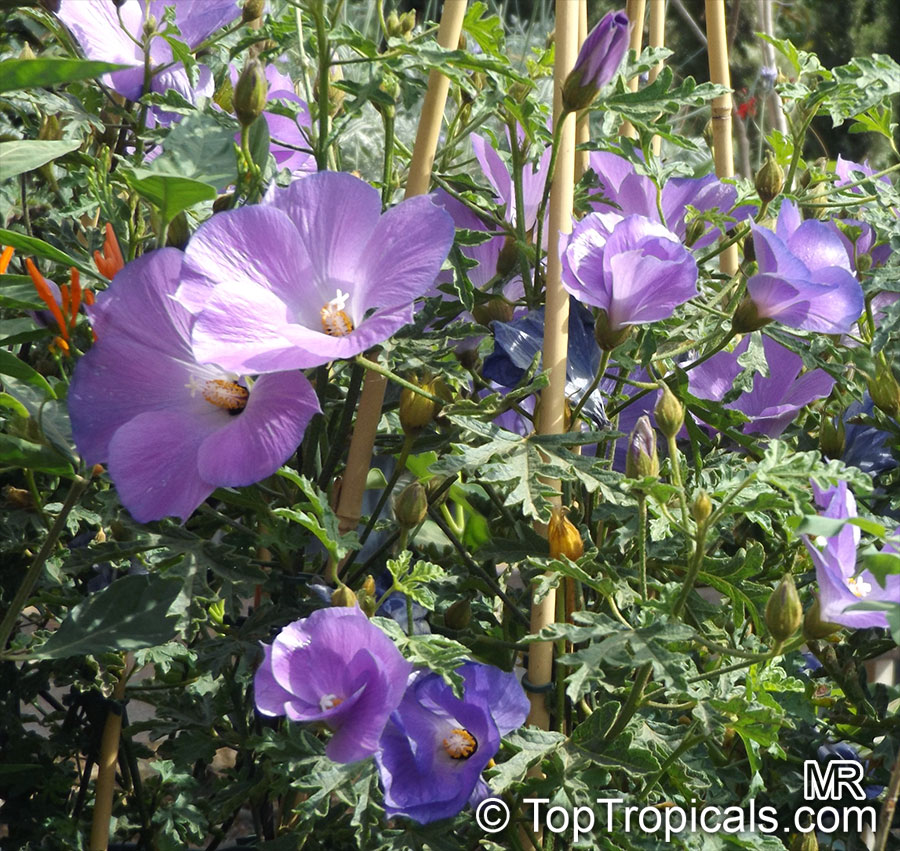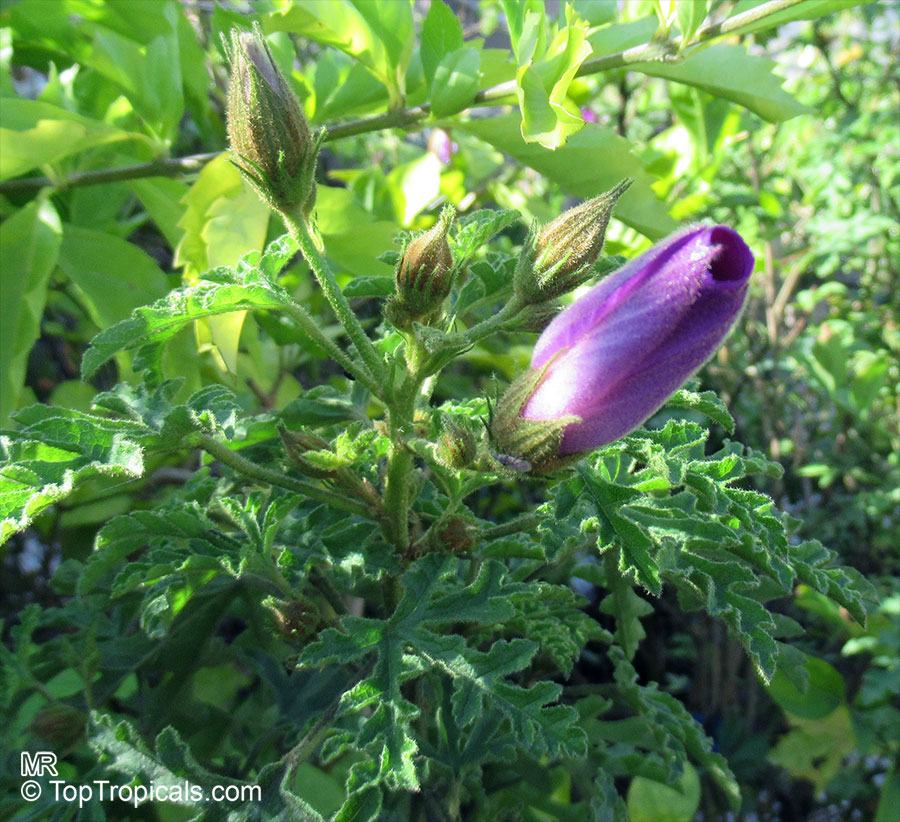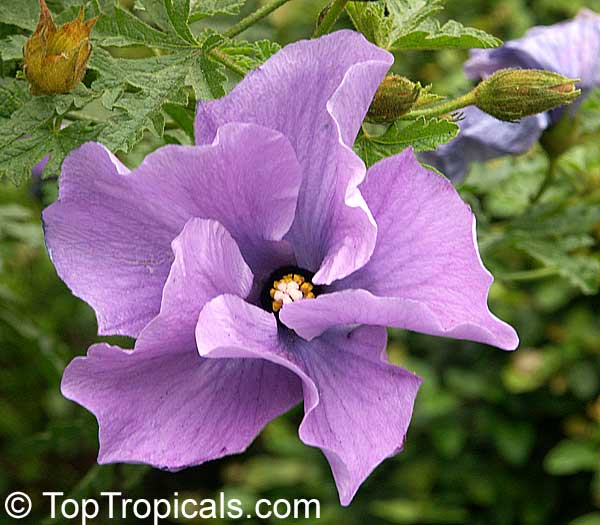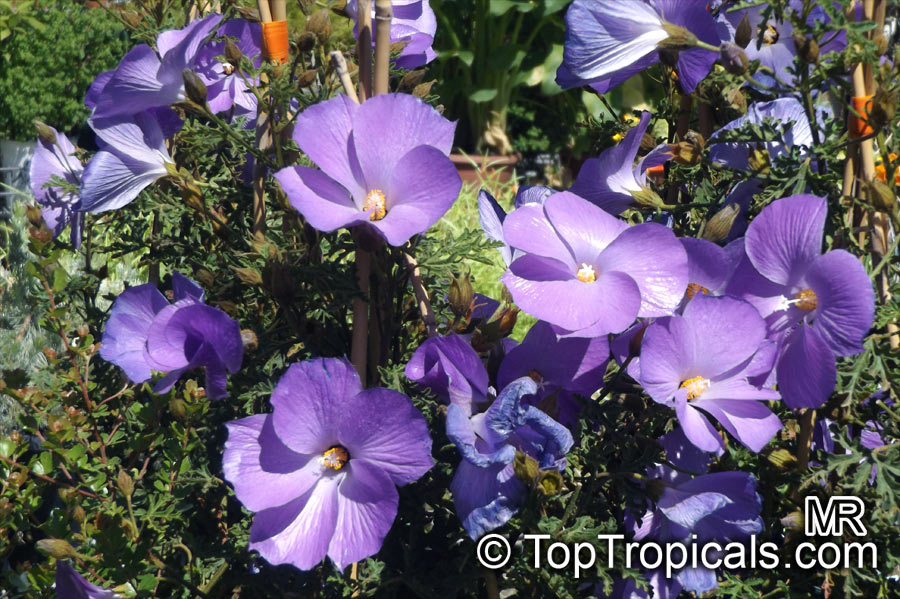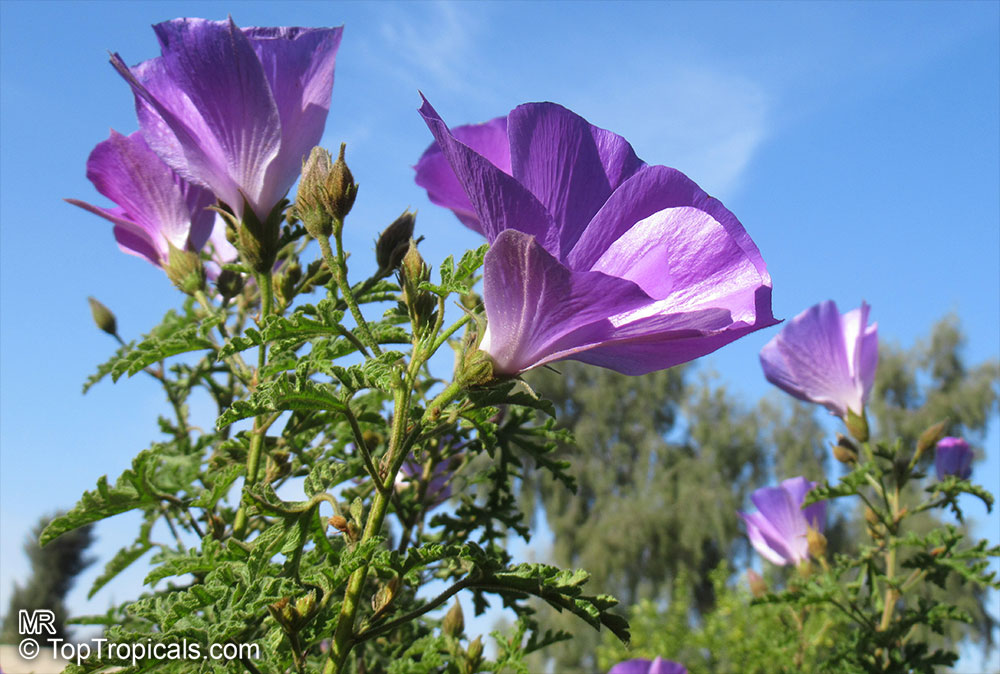Alyogyne - Plant Encyclopedia Results
Top Tropicals Plant Encyclopedia
| Number of plants found: 2 |
Botanical names: Alyogyne hakeifolia, Hibiscus hakeifolius, Cienfuegosia hakeifolia, Fugosia hakeifolia, Alyogyne lilacina
Common names: Red-centred Hibiscus, Desert Rose
Family: Malvaceae








A.hakeifolia is a medium, much-branched upright shrub reaching about 10Ft in height. The leaves are dark green, glabrous, comprised of very narrow linear segments. The individual lobes make the foliage 'needle-like'. The plant produces an abundance of blooms each season. There are mauve, yellow and pink forms. Like its relative, Hibiscus, the individual flowers last only 1-2 days but new flowers continue to open over a long period, generally from November until March. The blooms are 2" to 6" long, tubular in shape, not opening widely and they usually have a dark red central spot. As A.hakeifolia is a desert plant, it is well suited to a warm, dry climate. It is intolerant of bad drainage but is adaptable and sufficiently hardy in cool moist climates such as south-eastern Australia. It is less hardy than Alyogyne huegelii in climates such as the subtropics with wet summers. A well-drained sunny spot is ideal although plants will grow in semi-shade. Plants perform best when they receive sunlight for most of the day and have some wind protection as large plants are subject to wind damage. The plant may develop into a well-shaped shrub without any need for pruning but it can be pruned to improve the shape if desired. A.hakeifolia tolerates mild frosts but some protection may be required from heavier frosts. Propagation from seed is relatively easy and no special pretreatment is needed. Cuttings also strike readily.
Botanical names: Alyogyne huegelii, Hibiscus geranifolius
Common name: Blue Hibiscus
Family: Malvaceae
Origin: Australia







Alyogyne huegelii is in cultivation, primarily in Australia and the SW USA, but also in Europe, where it is grown as a conservatory plant. In the former areas is a hardy and adaptable shrub, which is lime, drought and frost tolerant. It requires a well drained soil, but can be grown in sand, loam or clay soils. It can be grown in full sun, or in partial shade. Protection from strong winds is desirable. It is described as suitable for USDA zones 9 and 10, though in wet areas it may be necessary to grow it in containers, or to graft it onto other species of Hibiscus. Although it has a degree of frost tolerance, and has been reported to tolerate 12C of frost for short periods without permanent damage, it is not be suitable for growing in the ground in temperate climates, either due to longer and deeper periods of frost in continental climates, or to winter wet in maritime climates. In such climates there is the option of growing the plant as a conservatory or patio shrub. In mild areas growth as a wall shrub with a sheltered sunny aspect and a well drained soil it may survive for a few years, but will probably be seen off by the first cold or wet winter. Little watering is required, especially if the plants are well mulched. Once established supplementary watering should be required only during extremely dry condition, but is tolerated provided the plants are in a well-drained position.
Use link to repeat this search:
https://toptropicals.com/cgi-bin/garden_catalog/cat.cgi?find=Alyogyne&search_op=and&keyword_op=and&language=e&number=10
&no_change_lang=1&user=tt&sale=1&first=0
